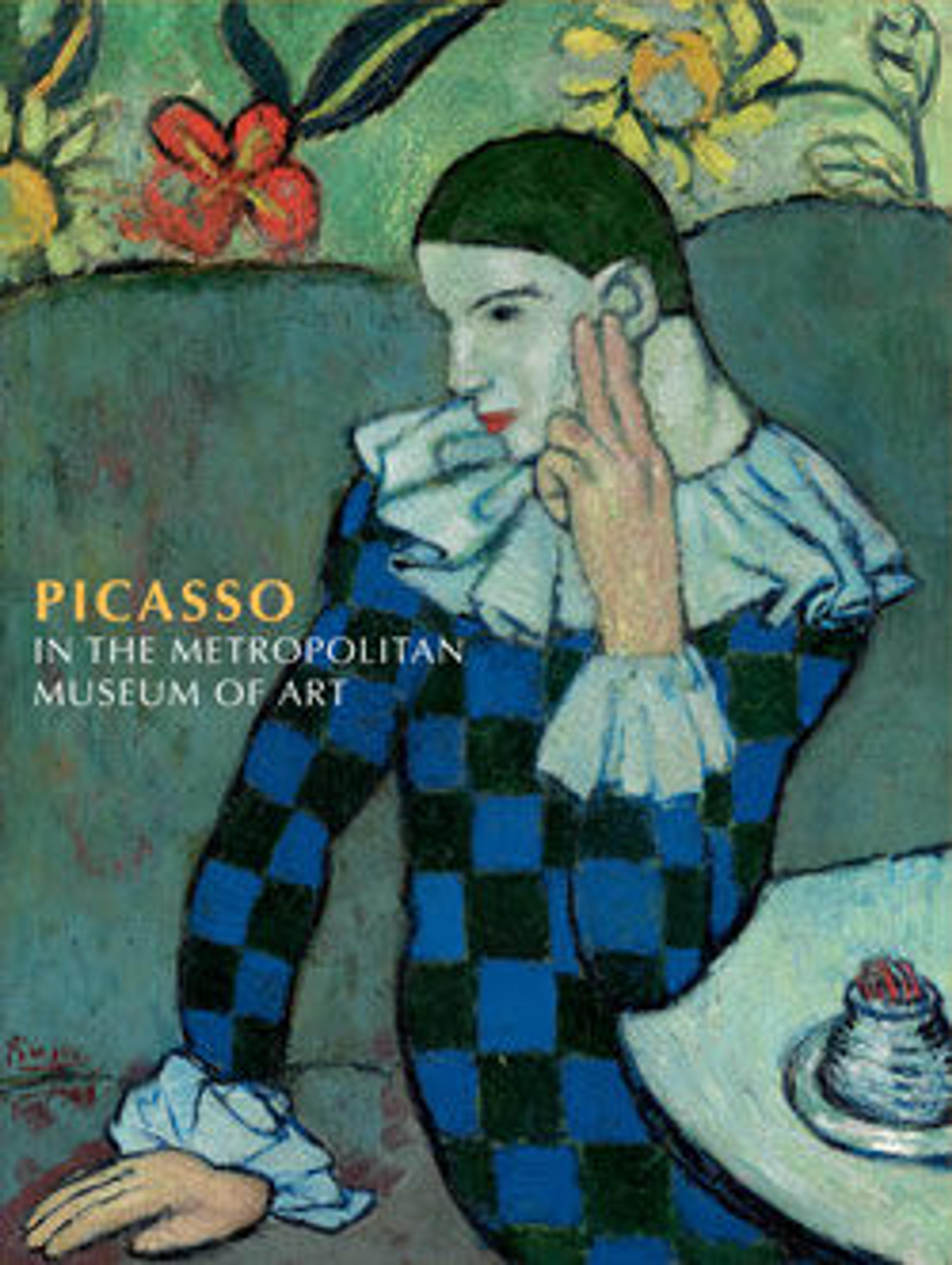Guitar and Clarinet on a Mantelpiece
"My life is hell," wrote Picasso to Gertrude Stein just before the death of his companion, Eva Gouel, in December 1915. Picasso's preoccupation with Eva's health, the war, his friends in the army, and his status as a Spanish citizen in France accounts for his small output that year. Although Picasso's few friends remaining in Paris were fascinated by his foray into representational portraiture (see the portrait of Ambroise Vollard, MMA 47.140), they all noted the presence of large Cubist compositions in his studio on the rue Schoelcher, overlooking the Montparnasse cemetery. It was, perhaps, because of the war that the canvases remained in his studio, where Picasso continued to revise them. This composition was repainted innumerable times, passing from a drab palette of browns and grays to one of cool, vivid hues, and then, finally, to the dark colors associated with Picasso's despair over Eva's decline.
While Picasso would paint many still lifes on a mantel, this may be his first. He stresses the anthropomorphic aspects of the inanimate objects, encouraging the cheeks of the mantel to be read as legs and the musical instruments to be associated with male and female anatomy. Picasso clearly considered this an important work: not only did he photograph it in progress, he later hung the painting at his country home in Fontainebleau and kept it until 1930.
While Picasso would paint many still lifes on a mantel, this may be his first. He stresses the anthropomorphic aspects of the inanimate objects, encouraging the cheeks of the mantel to be read as legs and the musical instruments to be associated with male and female anatomy. Picasso clearly considered this an important work: not only did he photograph it in progress, he later hung the painting at his country home in Fontainebleau and kept it until 1930.
Artwork Details
- Title: Guitar and Clarinet on a Mantelpiece
- Artist: Pablo Picasso (Spanish, Malaga 1881–1973 Mougins, France)
- Date: 1915
- Medium: Oil, sand, and paper on canvas
- Dimensions: 51 1/4 x 38 1/4 in. (130.2 x 97.2 cm)
- Classification: Paintings
- Credit Line: Bequest of Florene M. Schoenborn, 1995
- Object Number: 1996.403.3
- Rights and Reproduction: © 2025 Estate of Pablo Picasso / Artists Rights Society (ARS), New York
- Curatorial Department: Modern and Contemporary Art
More Artwork
Research Resources
The Met provides unparalleled resources for research and welcomes an international community of students and scholars. The Met's Open Access API is where creators and researchers can connect to the The Met collection. Open Access data and public domain images are available for unrestricted commercial and noncommercial use without permission or fee.
To request images under copyright and other restrictions, please use this Image Request form.
Feedback
We continue to research and examine historical and cultural context for objects in The Met collection. If you have comments or questions about this object record, please contact us using the form below. The Museum looks forward to receiving your comments.
